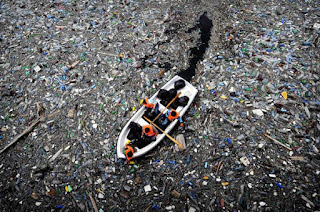12.9 Climate Change

What I find most troubling about climate change is that the U.S pulled out of the Paris Climate Agreement and we will not be part of the global effort to reduce the causes of climate change. As a public health professional, greenhouse gases emissions by companies need to be kept in check and constantly monitored as they are the ones emitting the most gases. Mitigation needs the greatest attention right now as we can see extreme weather patterns happening in the U.S and around the world. I would describe climate change to a long-lost relative first as what climate change is. There are pollutants like CO2, NO, and fluorinated gases that are released into the air by fossil fuels, coal, oil, gas. This pollutants are used as energy by industrial processes for transportation, fuel, and electricity. These pollutants are known as greenhouse gases. The greenhouse gases emitted from these industrial processes act like a blanket in the ozo...




